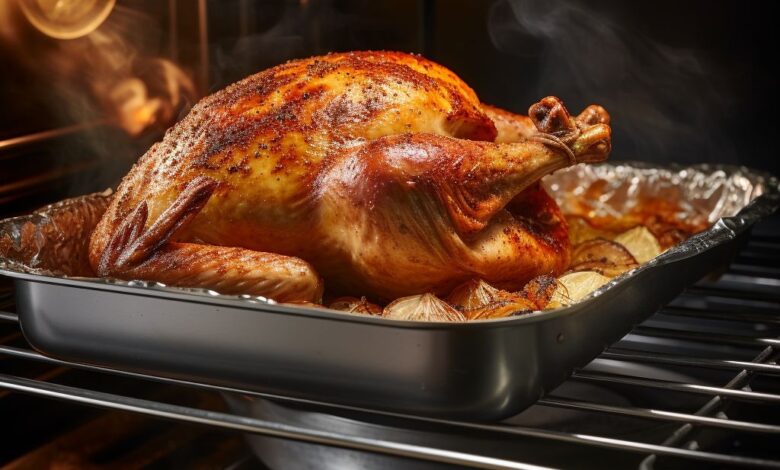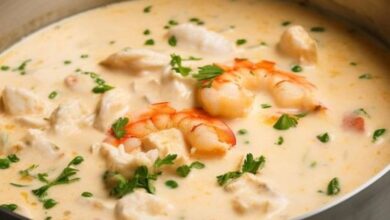My mother-in-law insists I add water in my turkey roasting pan, but I’ve never done that before. What do y’all do? I don’t want to do anything wrong.

As the holidays approach, one of the age-old dilemmas many home cooks face is whether to include water in the roasting pan when cooking a turkey. The ultimate aim remains consistent: to produce a succulent, well-cooked bird that delights every palate at the table. Let’s delve into the considerations surrounding the decision to introduce water into your turkey’s roasting environment.
ADVERTISEMENT
How Water in the Pan Impacts Turkey Roasting
The addition of water to the roasting pan can influence the cooking process in several ways:
ADVERTISEMENT
1. Steam:
When water is added to the pan and the turkey is placed in the oven, steam is generated. This steam can potentially maintain the turkey’s moisture as it circulates within the oven. However, it’s important to note that while steam aids in preventing dryness, it may not yield the desired crispy skin, as a moist environment isn’t conducive to achieving crispness.
ADVERTISEMENT
2. Temperature Control:
The presence of water in the pan can assist in regulating the temperature. Since water evaporates at 212°F (100°C), it helps in preventing the cooking environment from rapidly reaching excessive heat levels, resulting in more even cooking.
3. Gravy Enhancement:
Adding water can be advantageous if you intend to prepare gravy. The water combines with the turkey’s juices and drippings, providing a flavorful base for your gravy. This enhances the taste of the final sauce compared to solely relying on turkey drippings.
Arguments Against Adding Water to the Turkey Pan
Conversely, there are considerations that lean against adding water:
1. Dilution of Juices:
The addition of water can dilute the natural juices of the turkey, potentially leading to a less flavorful gravy. If you desire a rich, concentrated flavor in your gravy, it’s advisable to reconsider adding water.
2. Soggy Skin:
As mentioned earlier, a steamy environment may hinder achieving the desired crispy, golden-brown skin. For many, the crispy skin is a highlight of a perfectly roasted turkey, and soggy skin may disappoint.
3. Extended Cooking Time:
The presence of water in the pan can prolong the cooking duration, as the oven must heat the water in addition to cooking the turkey. This may pose a challenge if time is limited and the oven is occupied with other dishes.
Recommendations for Turkey Roasting with or without Water
The decision to include water in your turkey pan hinges on your desired outcome.
If you prioritize moist meat and are less concerned about crispy skin, consider adding a small amount of water to the pan. Alternatively, if achieving crispy skin is your goal, refrain from adding water and explore other methods to retain moisture, such as basting, brining, or using a compound butter under the skin.
If you opt to include water, adhere to these guidelines:
1. Add a modest amount of water to the pan to avoid excessive steam.
2. Enhance the water with aromatic vegetables and herbs to infuse additional flavors into the steam.
3. Monitor the water level during cooking and replenish as needed to prevent the drippings from burning.
For those opting not to add water but still seeking a moist turkey, consider the following:
1. Prioritize brining the turkey before roasting to enhance moisture retention.
2. Utilize a foil tent to reflect heat and slow down skin cooking to ensure the meat cooks through before the skin burns.
3. Periodically baste the turkey with its own juices, butter, or a combination of both.
In summary, the decision to add water to your turkey pan while roasting is influenced by personal preference, desired texture and flavor outcomes, and the specifics of the recipe being used. Considering these factors will contribute to the creation of a delicious turkey tailored to your holiday table or any occasion that warrants this traditional centerpiece.




